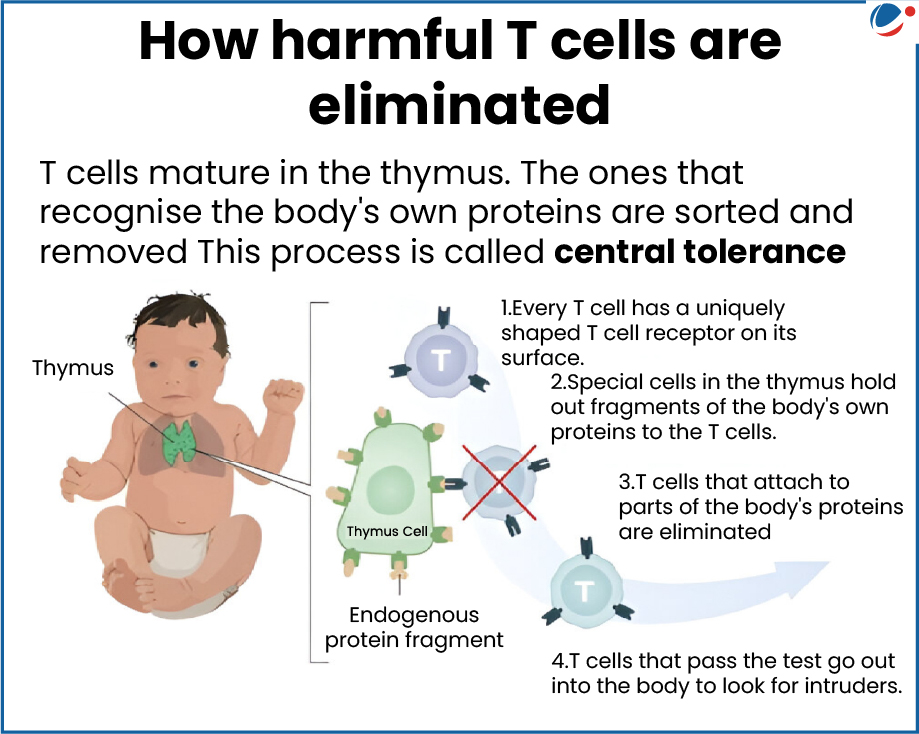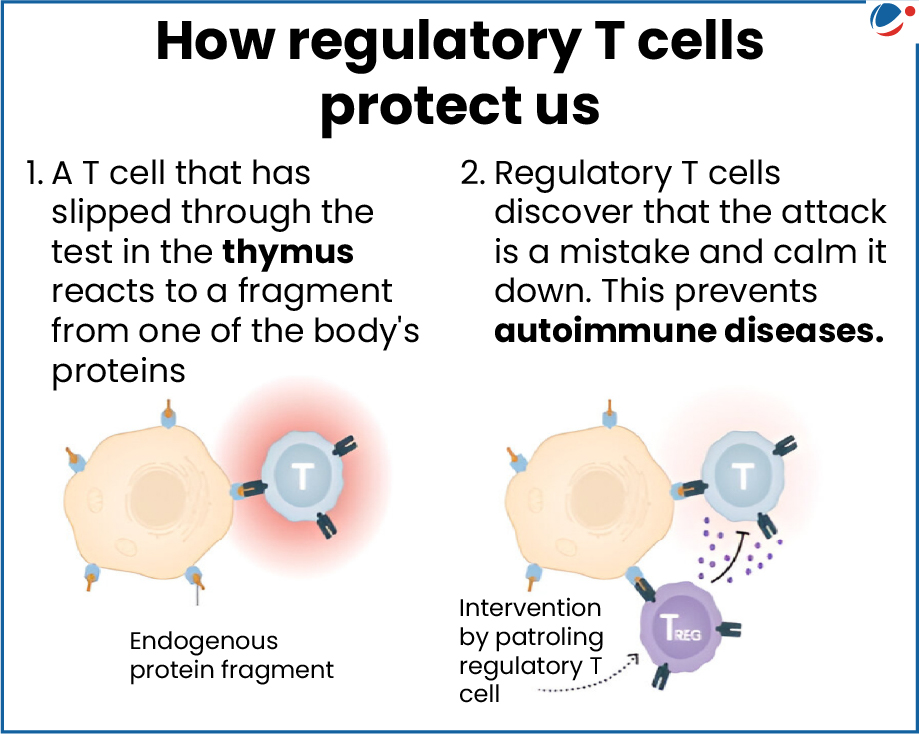Why in the News?
Mary E. Brunkow, Fred Ramsdell and Shimon Sakaguchi have been awarded Nobel Prize in Physiology or Medicine 2025 for their discoveries concerning peripheral immune tolerance.
More on the news
- Our immune system protects the body from harmful pathogens like viruses, bacteria, and fungi.
- However, it must also make sure not to attack its own cells — this balance is very important for healthy body function.
- The immune system uses two types of tolerance to achieve this — central tolerance and peripheral tolerance.

Central Tolerance
- This process happens in the thymus, a small gland in the lymphatic system that produces and trains T cells (a type of white blood cell).
- During training, the thymus removes self-reactive T cells — these are harmful cells that could attack the body's own proteins.(see infographic)
- However, this process is not perfect. Some of these self-reactive T cells escape from the thymus and enter the body's circulation and tissues, known as the periphery.
Peripheral Tolerance

- Once in the periphery, additional control is needed to prevent escaped self-reactive T cells from attacking the body.
- Here, Regulatory T cells (Treg cells) play a key role.
- Shimon Sakaguchi discovered this special class of T cells.
- These patrolling regulatory T cells identify self-reactive T cells and stop them from attacking our own tissues.(see infographic)
- In this way, Treg cells act as a security guard, protecting the body from its own overactive immune responses.
Role of the FOXP3 Gene
- Mary Brunkow and Fred Ramsdell discovered the FOXP3 gene, which controls the development and function of regulatory T cells in human body.
- If there is a mutation in the FOXP3 gene, regulatory T cells do not form properly.
- This can cause a rare autoimmune disease called IPEX, where the immune system attacks the body's own tissues.
Other Similar Applications
|
Significance of the Discovery
- Treatment of Autoimmune Diseases: In autoimmune diseases the body's immune system starts to attack itself.
- In a patient suffering from such diseases, increasing the number of regulatory T cells can significantly supress the self-attacking behaviour of immune system.
- Providing Cancer Treatment: In cancer, regulatory T cells are often found in large numbers around tumours, where they suppress the activity of immune cells (like killer T cells) that would otherwise attack the cancer.
- This means too many regulatory T cells can protect the tumour, allowing it to grow. In many cancers, therapies try to reduce or block regulatory T cells inside the tumour.
- This helps free the immune system to attack and kill cancer cells more effectively
T cells
|



